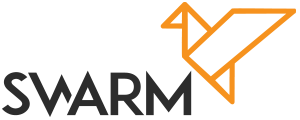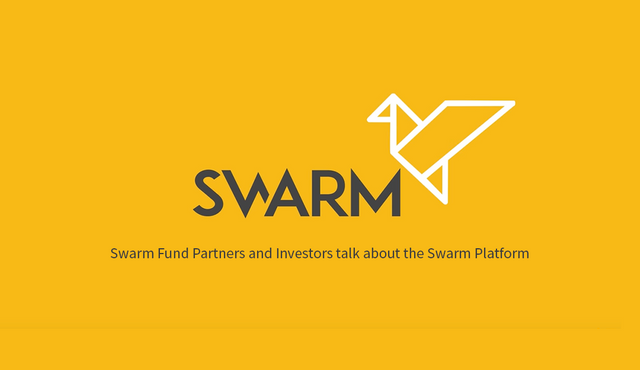Swarm Fund - JOIN PRESALE UNTIL 21th Sept
Liquid Democracy

Among the 1,500 ICO’s announced or launched to date, a unique aspect of Swarm Fund – aside from having an actual product that’s ready for market – is our “liquid democracy” governance model.
We’ve been saying for a while that Swarm’s fundamental goal is to democratize investing. The way we’ll do that is by implementing liquid democracy to empower investors in a way the world of finance has never seen before.
Liquid democracy, in its simplest form, is a hybrid of direct and representative democracy. In a direct democracy system, everyone votes on every issue. In a representative democracy, such as the system in use in the United States, voters elect representatives, or delegates, to make decisions on issues for them.
The problem with direct democracy is that it can be cumbersome to administer, especially when decisions need to be made quickly. Challenges with representative government can be summed up in terms of “election year promises,” where delegates say one thing to get elected, and do another once in office.
Liquid democracy combines the best of both systems by allowing members to vote directly, or through a delegate, on any issue. The part that’s “liquid” about it is that even if a voter decides to delegate their vote to someone else, they can rescind that choice down the road, if they disagree with the delegate’s handling of an issue, or even if they just change their mind on a given topic.
What does all this mean for Swarm Fund? Well, for one, it means that in addition to being a decentralized capital marketplace that gives smaller investors access to high-return asset classes, the overall governance of the platform will reside with the users themselves, who will actually own it under a co-operative type framework. The structure will be similar to how member-owned credit unions and insurance companies are set up.
Then, once the ICO is complete, three of the five spots on the Swarm Fund board will be filled with either members of the Swarm, or managing partners of the initial pilot funds operating on the platform.
Who decides who holds these three seats? Swarm token holders who buy into the platform during the ICO.
Following the liquid democracy model, they’ll be able to vote directly for candidates, who will also be nominated by the Swarm, or delegate their votes to others, if they choose. Of course, those votes will also be weighted according to the number of Swarm tokens owned.
The two remaining board seats will be filled by Timo Lehes and Philipp Pieper, both of whom have been instrumental in bringing Swarm 2.0 to fruition. Their guidance will help ensure Swarm Fund gets up and running in line with its intended vision. While I’ll still retain veto power over major decisions on the platform, board seats will go up for a vote every six months, with nominations coming from members of the platform itself.
The question then became why do we need institutions like banks for the investing process in the first place – taking fees from investors, just because they existed? Why not just use distributed software instead, which wasn’t “owned” by anyone, to allow investors, with the help of smart contracts, do the same thing?
And yet, many of the first iterations of Decentralized Autonomous Organizations, including The DAO, never truly fulfilled this vision. Instead, they still operated under a quasi-centralized structure that was controlled from the top, and not the members themselves. Instead of banks, crypto enthusiasts were giving money to software development teams, who became the new middlemen.
Swarm’s liquid democracy governance structure is specifically designed to avoid that scenario, while empowering people to move their money and investments, without relying on middlemen, lawyers and banks. Instead, members of the cooperative can rely on the distributed power of smart contracts and the blockchain to verify transactions, without the need for an overarching institution to keep tabs on what’s in every member’s account.
There’s a much more pragmatic aspect of this governance system that goes beyond members being able to elect a board, and eventually, even propose new fund ideas on the platform. Namely, since Swarm Fund is set up as a cooperative that is governed by its members, it also allows us to pass a key provision of the Howey Test.
Because members who buy the initial Swarm utility token will be actively involved in the governance of the platform through liquid democracy, profits from the system won’t be coming from a third party – they’ll derive from the members’ actions themselves. That’s a critical aspect under Howey.
Swarm SUN sub-tokens, on the other hand, will enable members on the platform to invest directly into the pilot funds themselves, and thus, may be classified as securities.
It’s also this thought-through structure of having a utility token, as well as specific fund sub-tokens, that helps us pass another part of the Howey Test. Namely, by having the original token and the sub-token, we can distinguish the utility from the security. It is the essence of a bright line test.
That’s why we won’t be excluding U.S. citizens and residents from the initial utility token round, as we’re seeing so many ICO’s do in the current environment. U.S.-based investors will be able to buy in just like anyone else.
Whereas many ICOs have been developing their technology first, and then rushing to market to raise as much coin as quickly as possible via legally questionable frameworks, we’ve taken the opposite approach. We set up a clear governance structure and legal model first, made sure that it interfaced with various regulatory regimes in different parts of the world, and then sought confirmation that we were not violating U.S. security laws by bringing it to market.
Why Fund Managers See Opportunity in the Swarm

Take Daniel Tümpel, from Fine Art Partners, a financial services fund to blue chip art investors in Berlin. In the fast-moving world of art, where one-of-a-kind pieces from the likes of Andy Warhol don’t stay on the market for long, having rapid access to cash makes all the difference. And that’s where Daniel sees the advantages of the Swarm, to act quickly to capitalize on unique, fast-moving deals.
You’ll also meet Mark Oei, Founding Partner at Redwood Coast Capital and a former managing director of Sequoia Capital’s Heritage Fund, and current Swarm advisor, who recently launched his own private equity fund to invest in solar installations for commercial real estate. While he has more than 25 years of institutional investing experience, the relatively short history of his new solar fund can give large investors pause. But by bundling together smaller investors who want access to his type of disciplined, institutional deals, Swarm provides “access to a new community of investors from around the world.”
Then there’s the perspective of Haydar Haba, managing partner at Silicon Valley-based Andra Capital. Haba sees an opportunity to put the Swarm’s collective assets to work in the late stage, but pre-IPO, technology companies Andra invests in. He routinely sees 40 to 50 companies seeking Round C or D funds, and estimates his market opportunity to be upward of $50 billion dollars. An investor and advisor in Swarm, he sees the platform as an opportunity to raise additional capital for Andra’s Silicon Valley Venture Fund.
Swarm Fund: In China’s Wake, A Compliant Model for ICOs

China’s decision to ban all ICOs September 4 shook the world of cryptocurrency to its core. As a result, by Monday afternoon in the U.S., nearly 20 percent of the combined asset value of all cryptocurrencies disappeared, with total losses approaching $38 billion.
Three years ago, we started re-imagining Swarm Fund’s mission to bridge the gap between traditional finance and the world of cryptocurrency. We envisioned a decentralized capital marketplace to give smaller investors access to high-return, private equity and hedge funds by bundling their currency together on the blockchain.
That’s the reason why Swarm Fund’s organizational structure consists of seven different legal entities today, operating in six jurisdictions:
Quantum Holonic Swarm Systems (USA)
Swarm Operations (Germany)
Swarm IP (Singapore)
Swarm Research Foundation (Panama)
Ethereum Alpha Fund (Cayman)
Bitadel Master Fund (Cayman)
Swarm Asset SPV (Estonia)
Our model then, which we believe offers a path toward compliance in the ever-changing regulatory environment, consists of these structural elements:
Decentralized ownership of the platform, by members, in a co-operative framework
Self-governance of the platform by members
A geographically-distributed legal structure that spans multiple jurisdictions
A multi-tiered token structure that draws a clear line between “utility” tokens (which give a member access to a platform) and “security” tokens, which are used for investment.
While many in the market will continue to try to bend their existing and planned IPOs in convoluted ways to fit into the still-evolving regulatory framework, especially in the wake of China, we’ve been putting in the legal legwork over the past three years to make sure we were ready and positioned well for this moment, not just with our technology, but from a legal perspective, as well.
How Swarm Works
Swarm – A Simple Use Case

HOW TO JOIN
CLICK IN LINK ----> https://swarm.fund/
Engage
Chat : Swarm Telegram (normal working hours)
Chat : Swarm Slack (normal working hours)
Email : [email protected]
Site : www.swarm.fund
Swarm Fund GitHub
http://t.me/swarmfund
http://www.twitter.com/theswarmfund
http://swarm.fund/blog
I will check this one. Thanks for sharing. :)